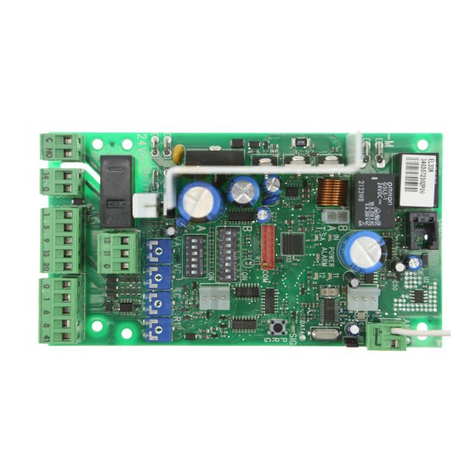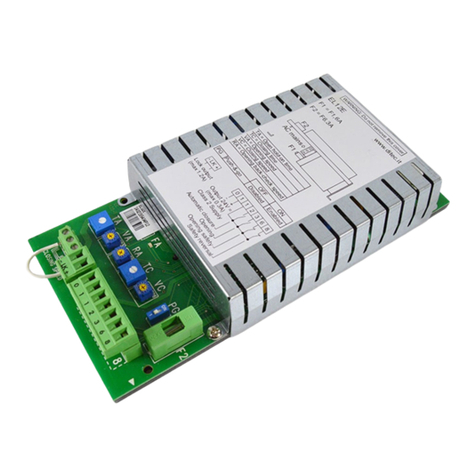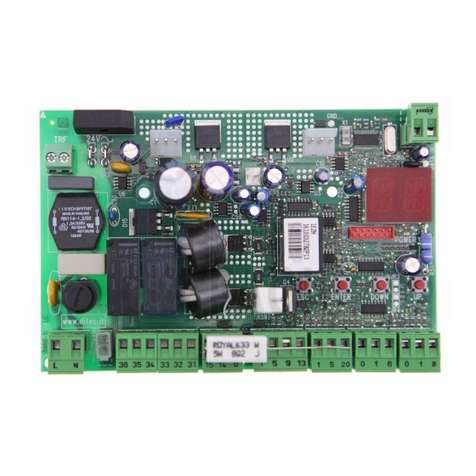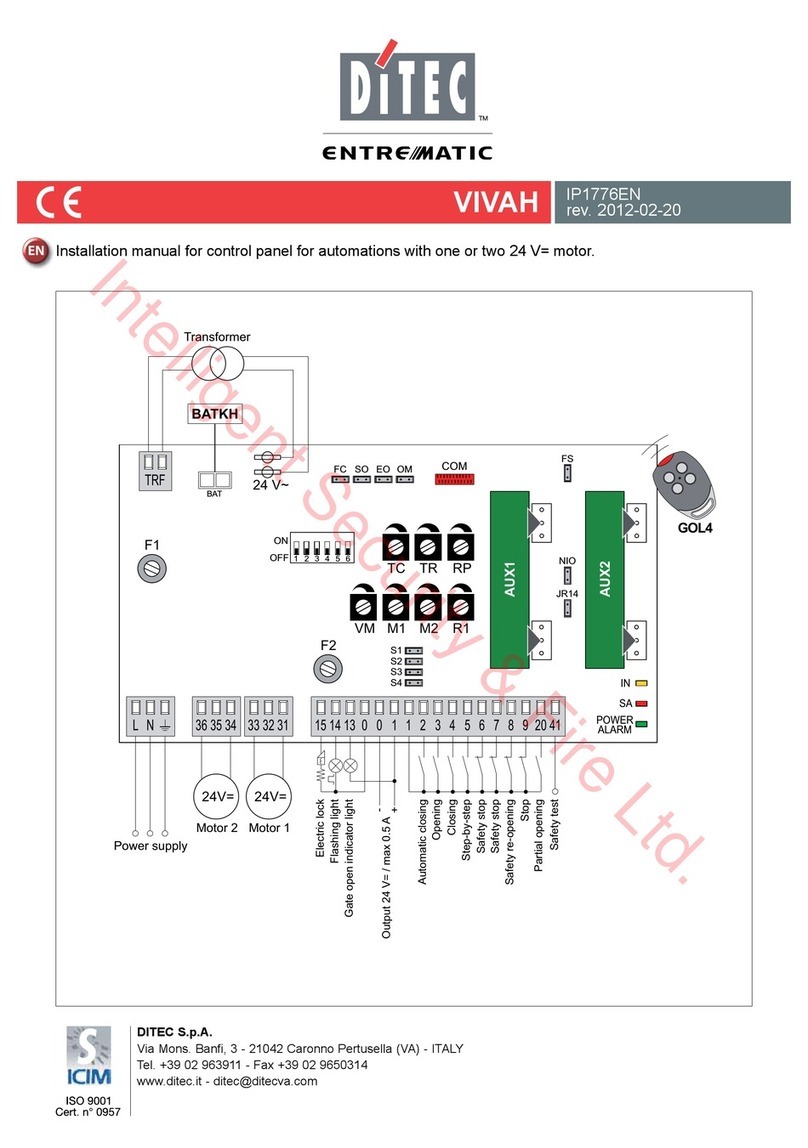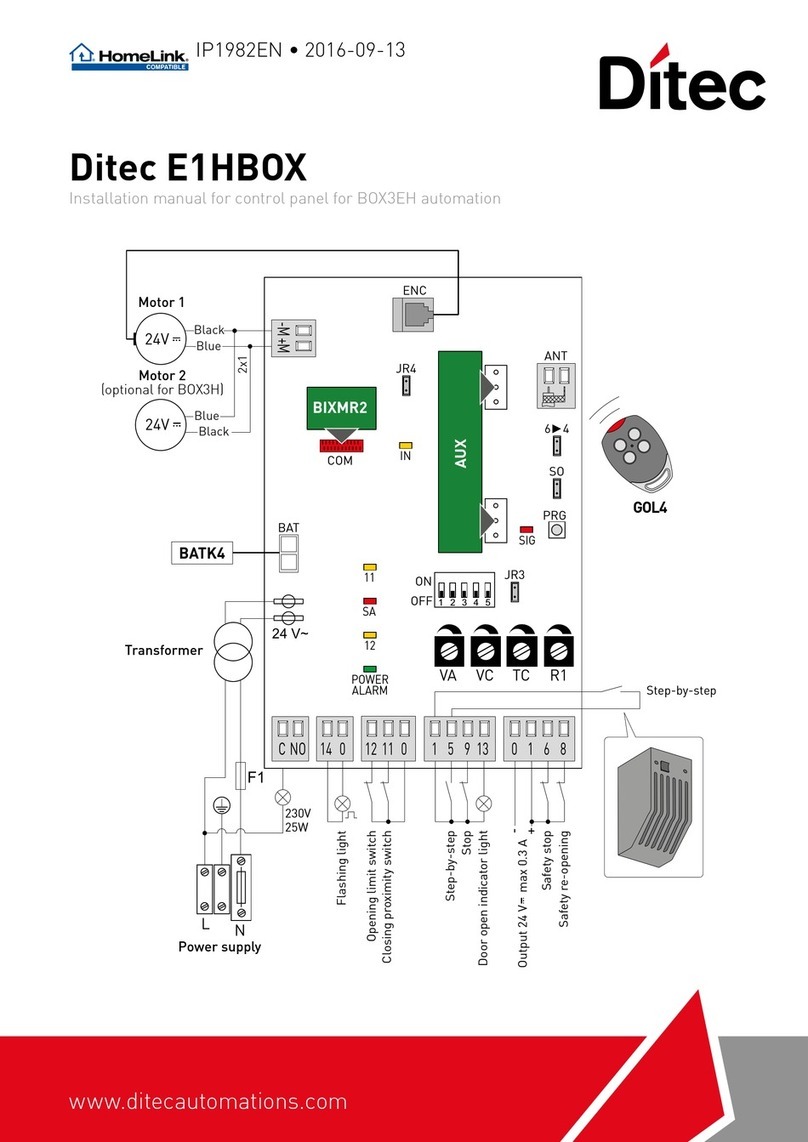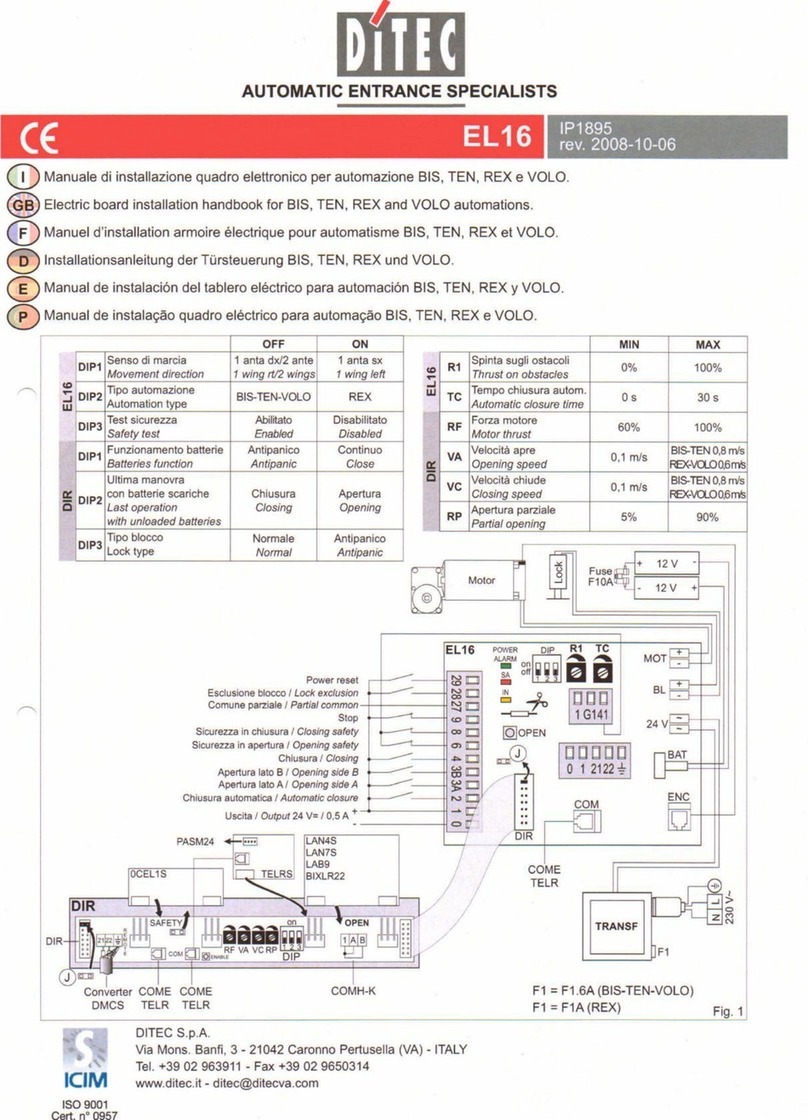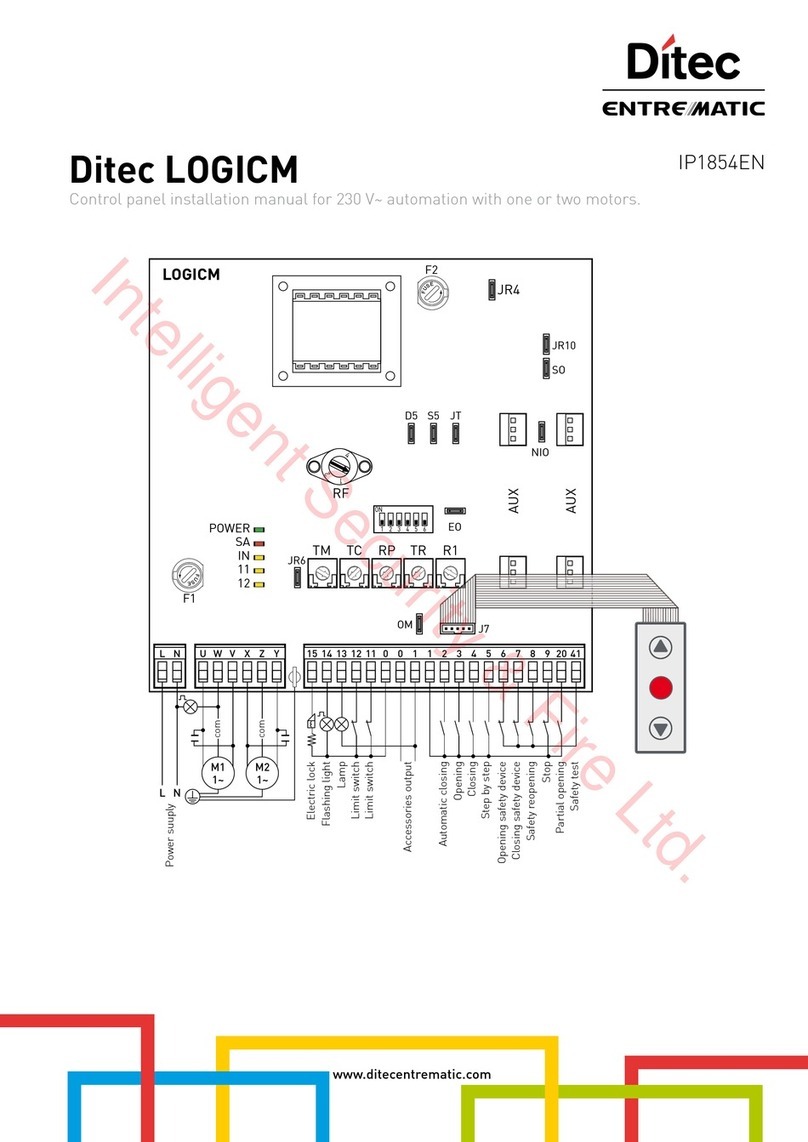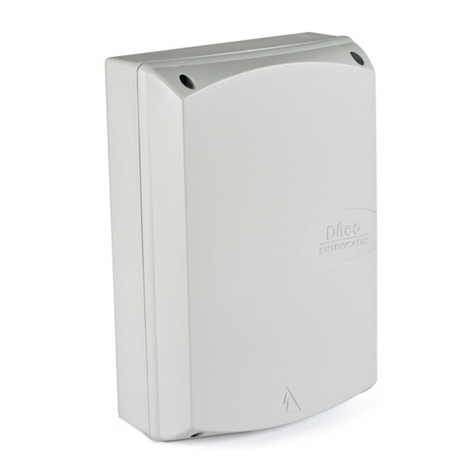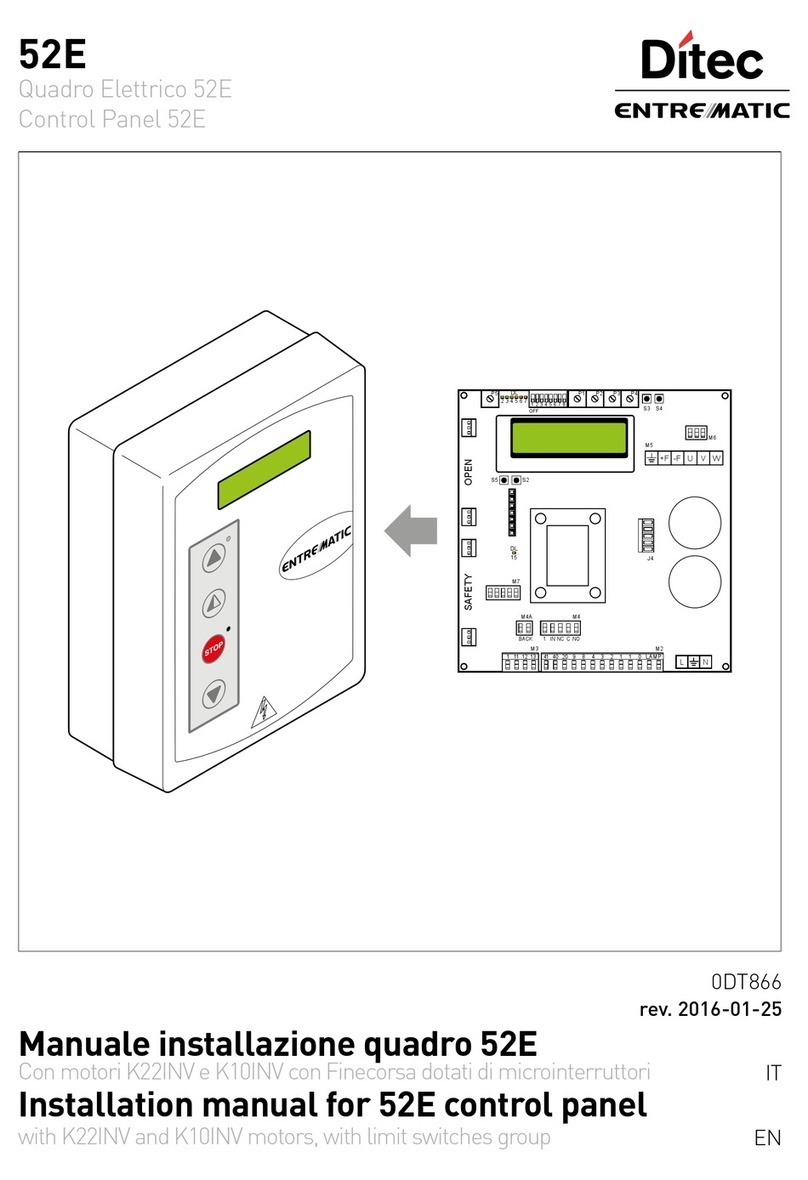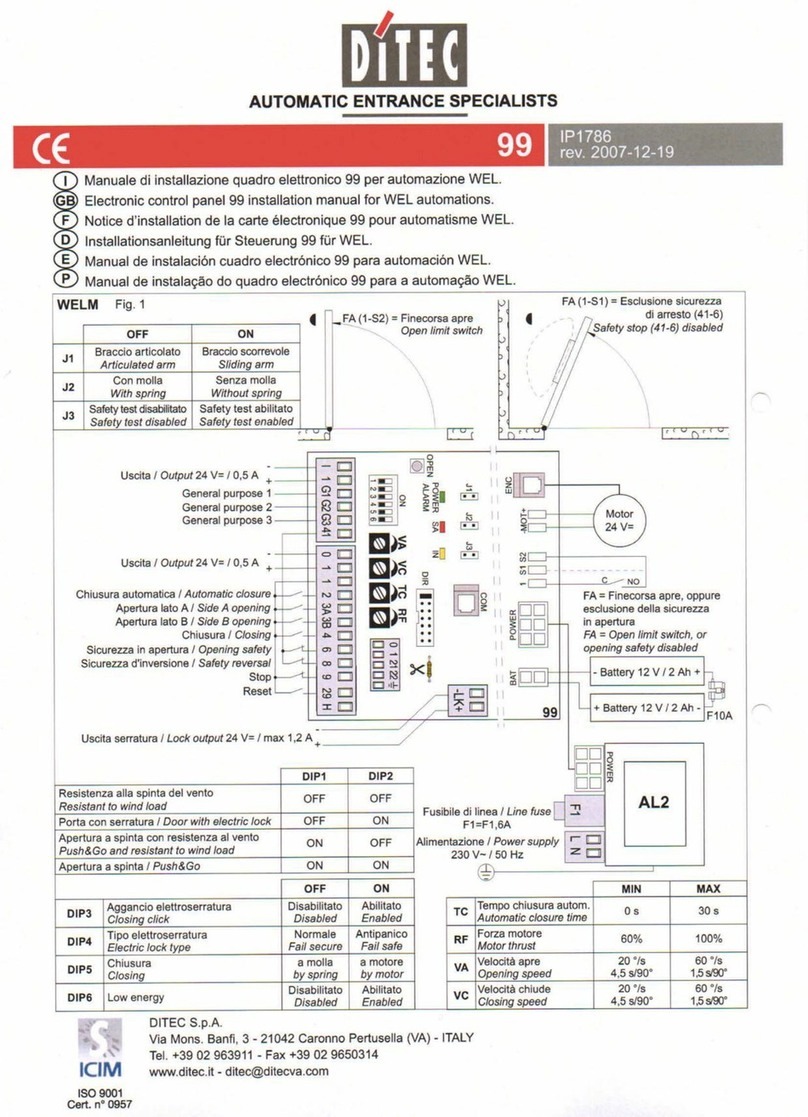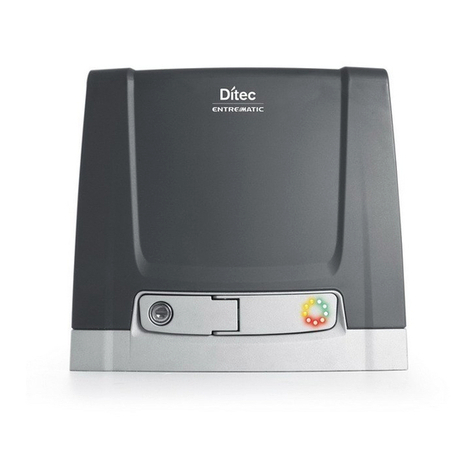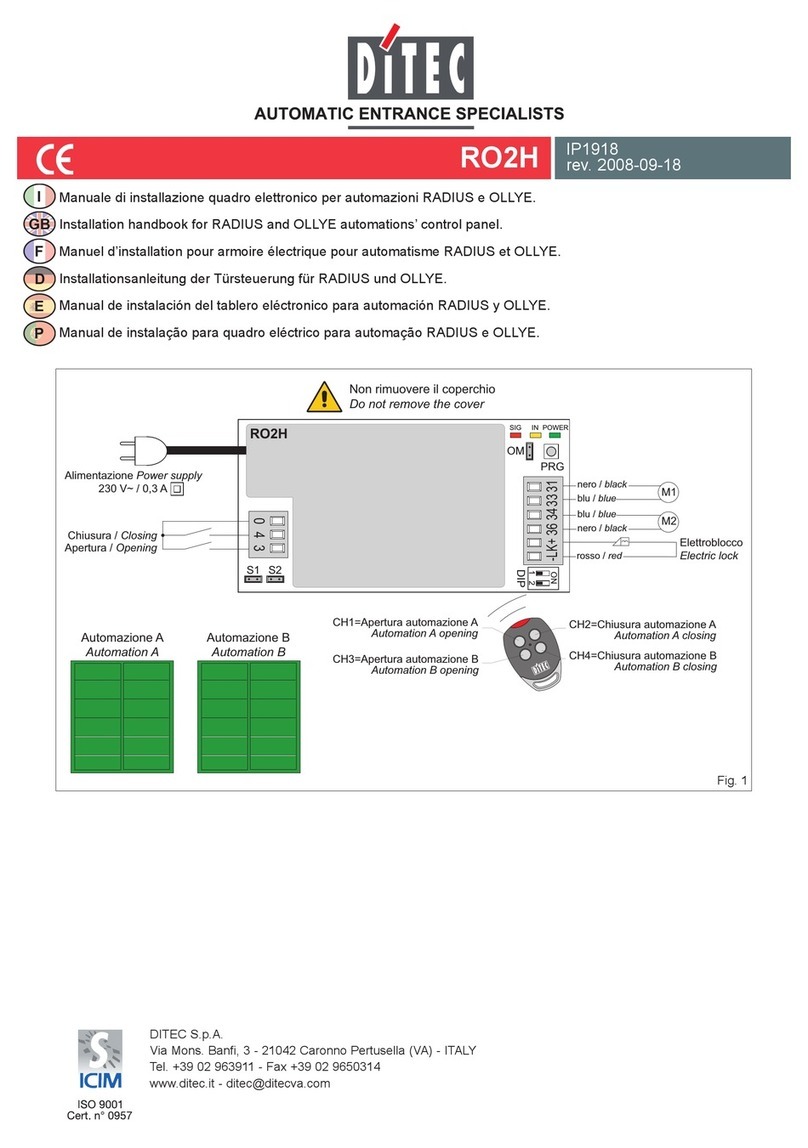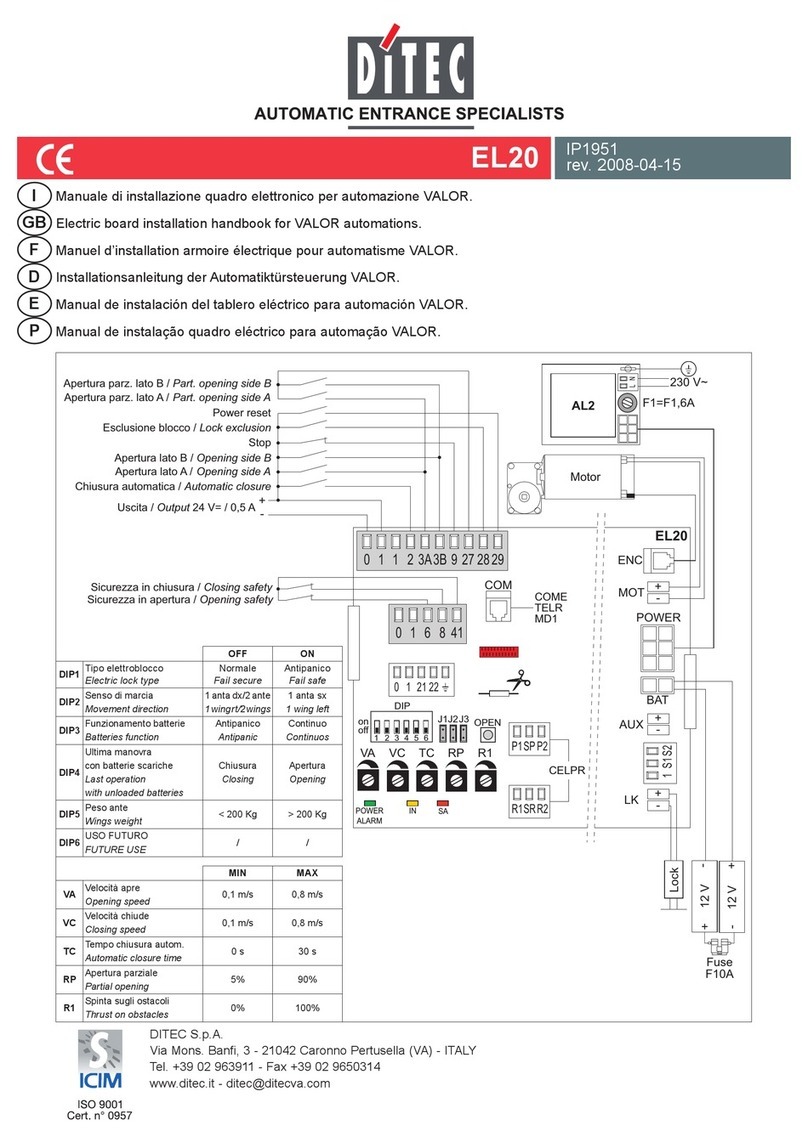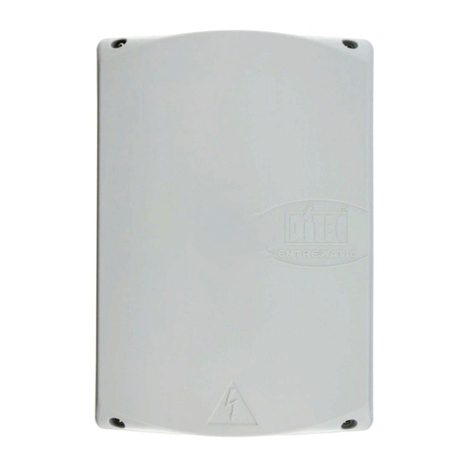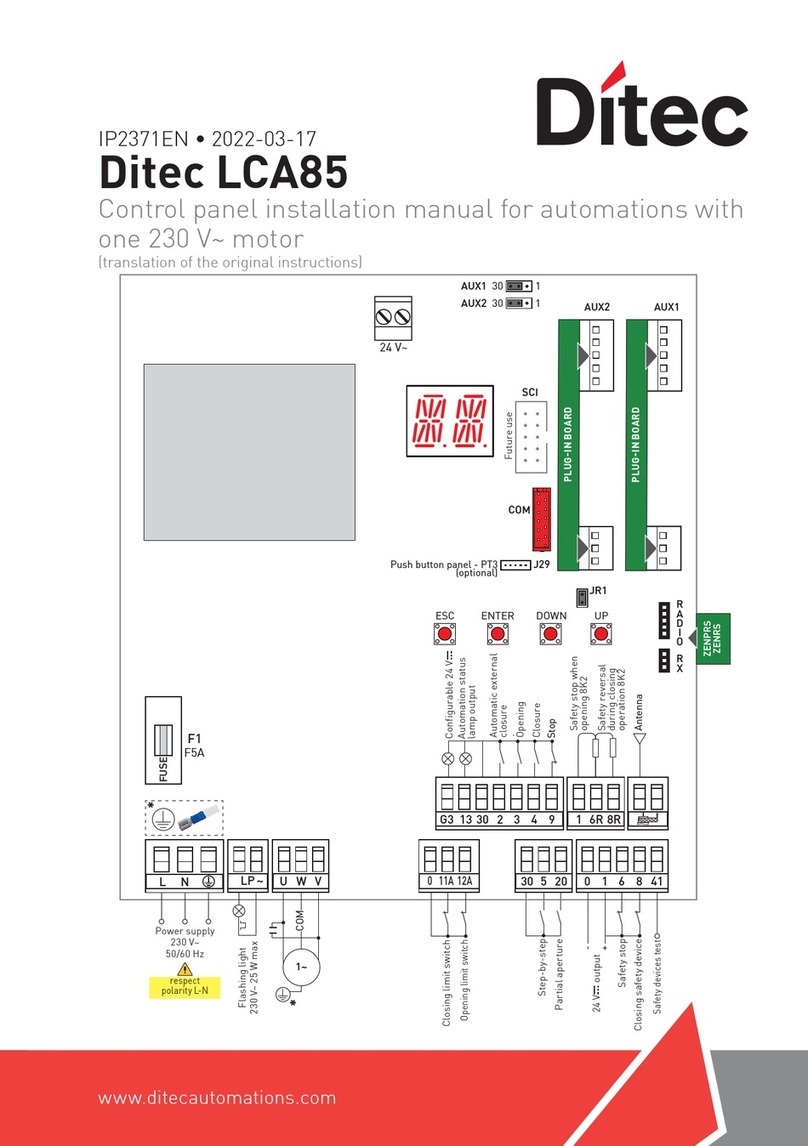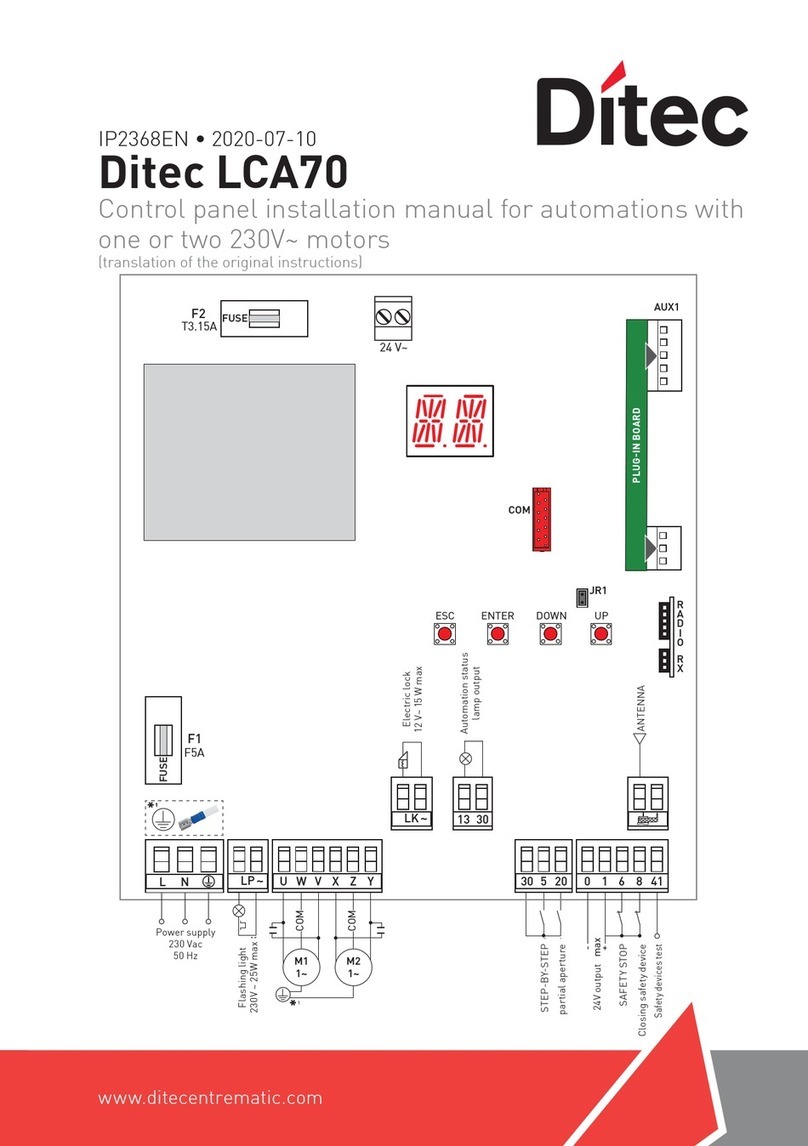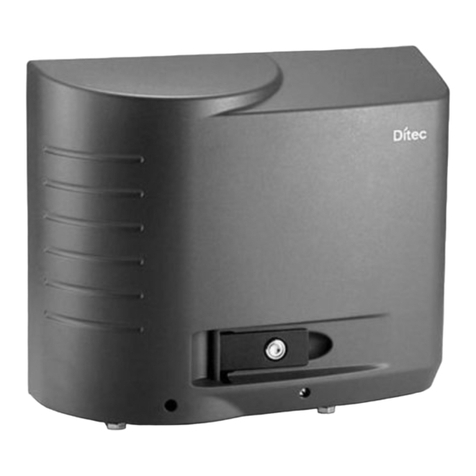
2
IP2251EN
Contents
Subject Page
1. General safety precautions 3
1.1 Safety functions 4
2. EC Declaration of Conformity 4
3. Technical specifications 4
3.1 Applications 4
4. Installation and electrical connections 5
4.1 Maintenance 7
4.2 Standard installation 7
4.3 Connections diagram for standard installation 8
5. Programming 9
5.1 Switching the display ON and OFF 9
5.2 Navigation keys 9
5.3 Menu map 10
6. Quick start-up sequences 12
6.1 Selection of automation type 12
6.2 Configuration of the number of gate wings 12
6.3 Enabling the configurations 12
6.4 Adding remote controls 12
6.5 Configuration of the limit switches 13
6.6 Configuration of the safety devices 13
7. Application examples 14
7.1 Automations with two swinging gates 14
7.2 Automations with one swinging gate wing 14
8. Commands 15
8.1 SOFA1-SOFA2 or GOPAVRS self-controlled safety edge 16
9. Outputs and accessories 16
10. Jumper setting 17
11. Adjustments 18
11.1 Main menu 18
11.2 Second level menu - AT (Automatic Configurations) 19
11.2.1 Selecting the type of automation AT → AS and specific default settings 20
11.3 Second level menu - BC (Basic Configurations) 20
11.3.1 Additional BC level parameters that can be configured (available with AT → AA enabled) 21
11.4 Second level menu - BA (Basic Adjustment) 22
11.4.1 Additional BA level parameters that can be configured (available with AT → AA enabled) 23
11.5 Second level menu - RO (Radio Operations) 25
11.5.1 Additional RO level parameters that can be configured (available with AT → AA enabled) 26
11.6 Second level menu - SF (Special Functions) 27
11.6.1 Additional SF level parameters that can be configured (available with AT → AA enabled) 28
11.7 Second level menu - CC (Cycle Counter) 28
11.7.1 Additional CC level parameters that can be configured (available with AT → AA enabled) 29
11.8 Second level menu - EM (Energy Management) 29
11.8.1 Additional EM level parameters that can be configured (available with AT → AA enabled) 30
11.9 Second level menu - AP (Advanced Parameters) 30
11.9.1 Additional AP level parameters that can be configured (available with AT → AA enabled) 31
12. Signals visualised on the display 36
12.1 Display of automation status 33
12.2 Display of safety devices and commands 34
12.3 Visualisation of alarms and faults 35
13. Troubleshooting 38
Key
This symbol indicates useful information for the correct operation of the product.
Factory settings
This symbol indicates instructions or notes regarding safety, to which special attention must be paid.
